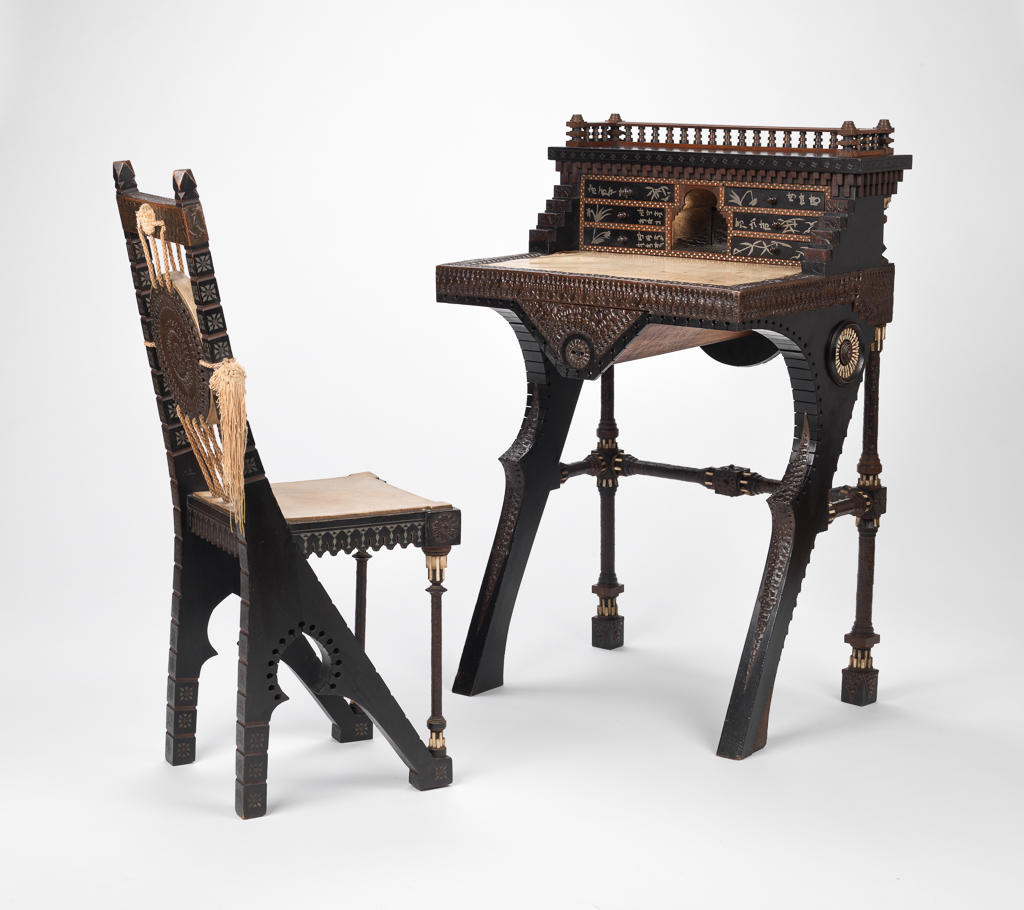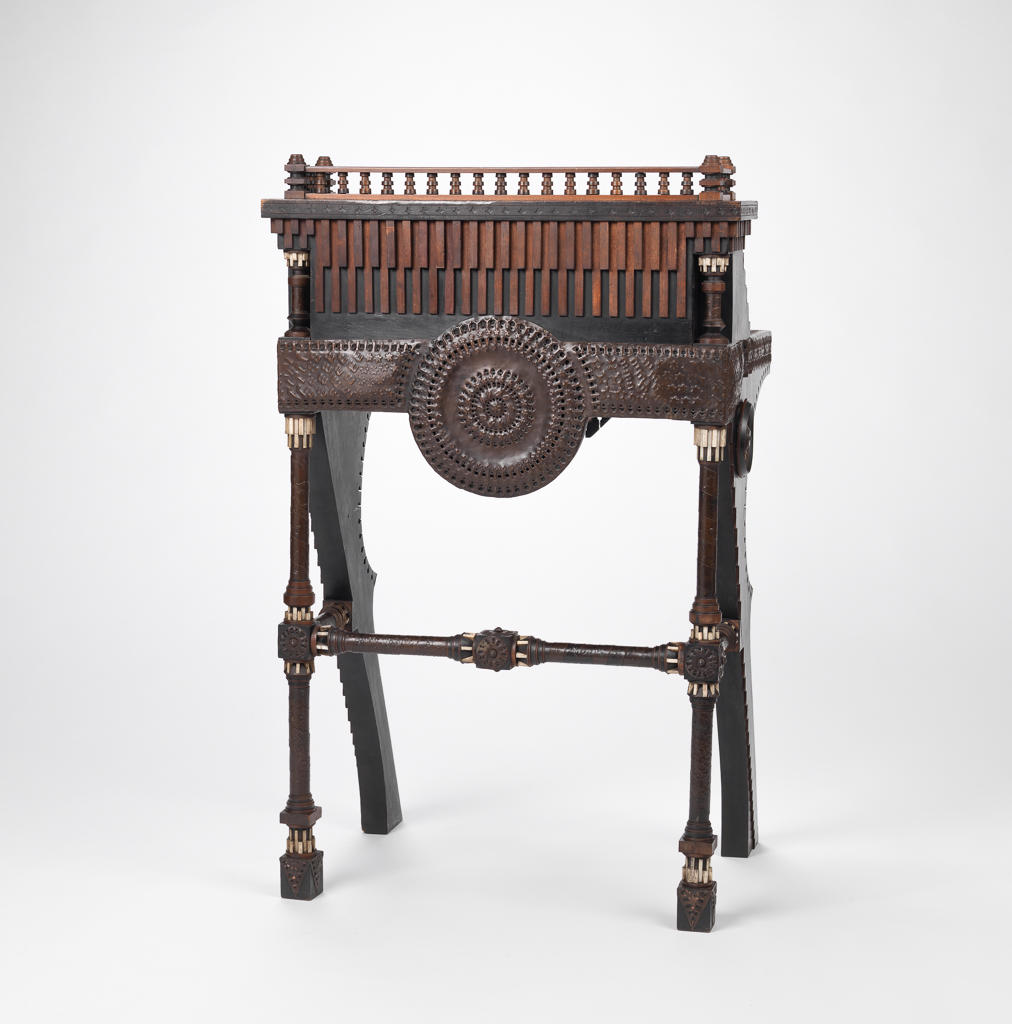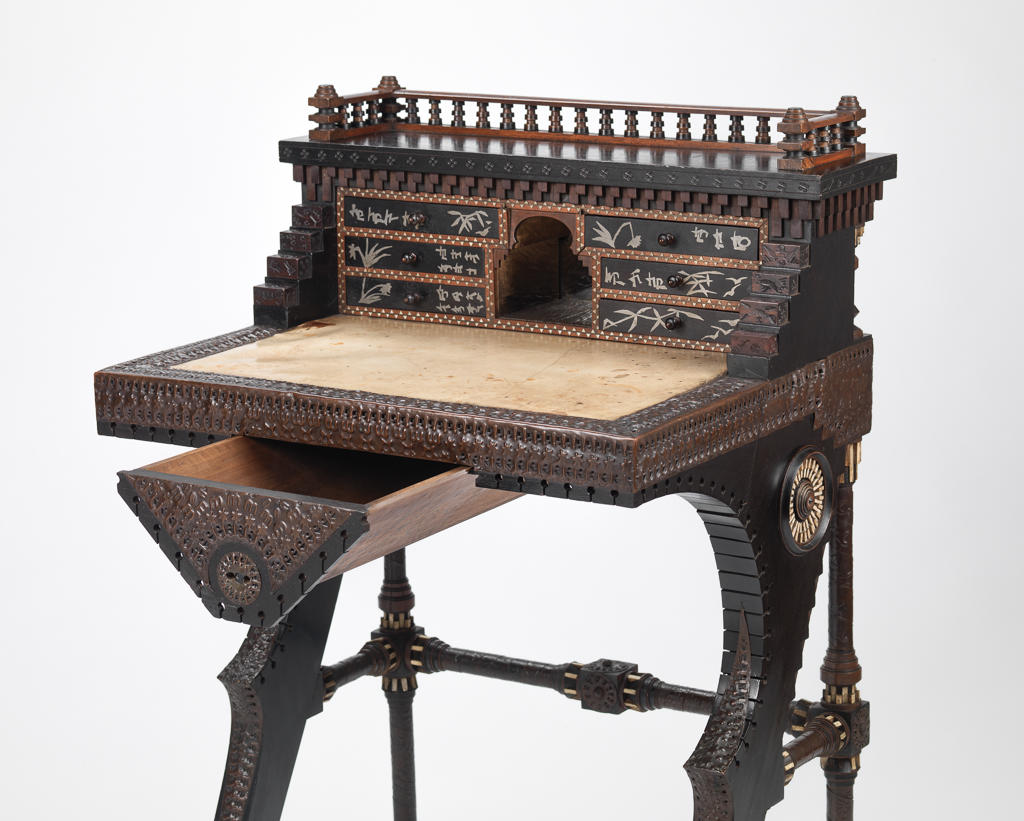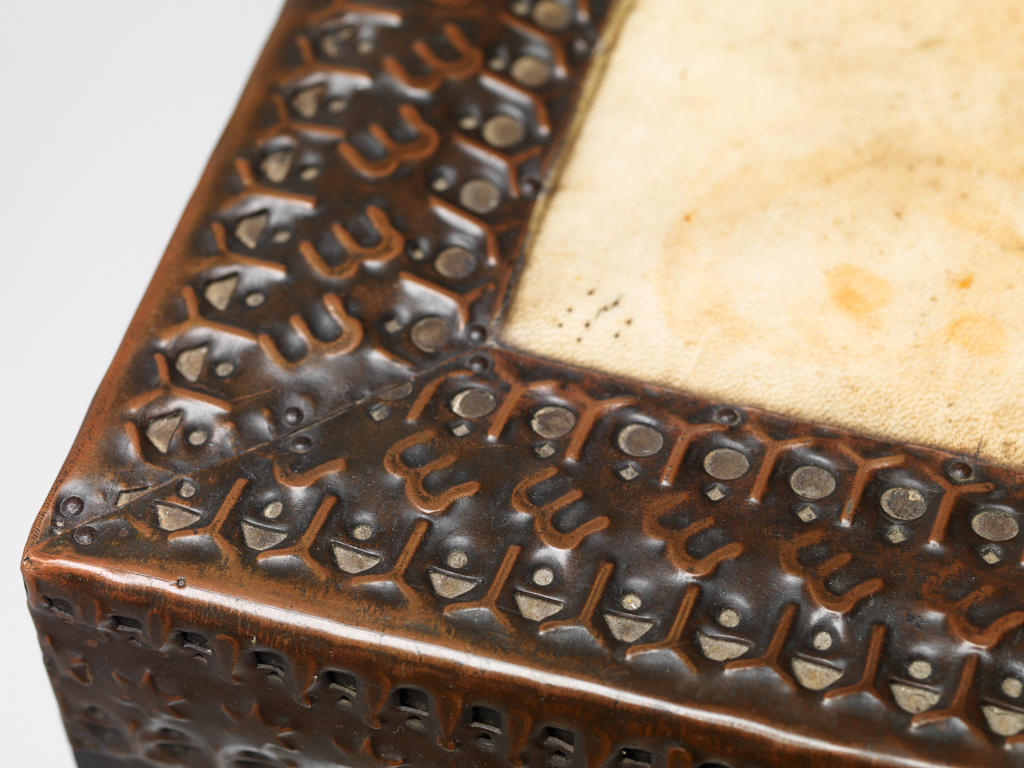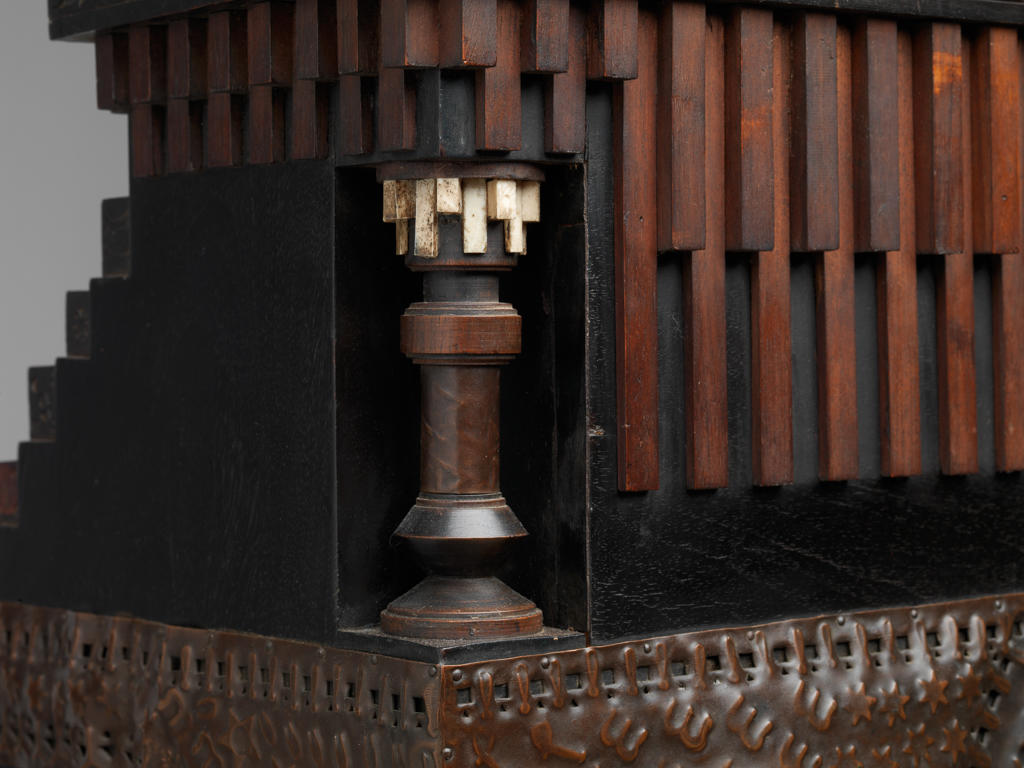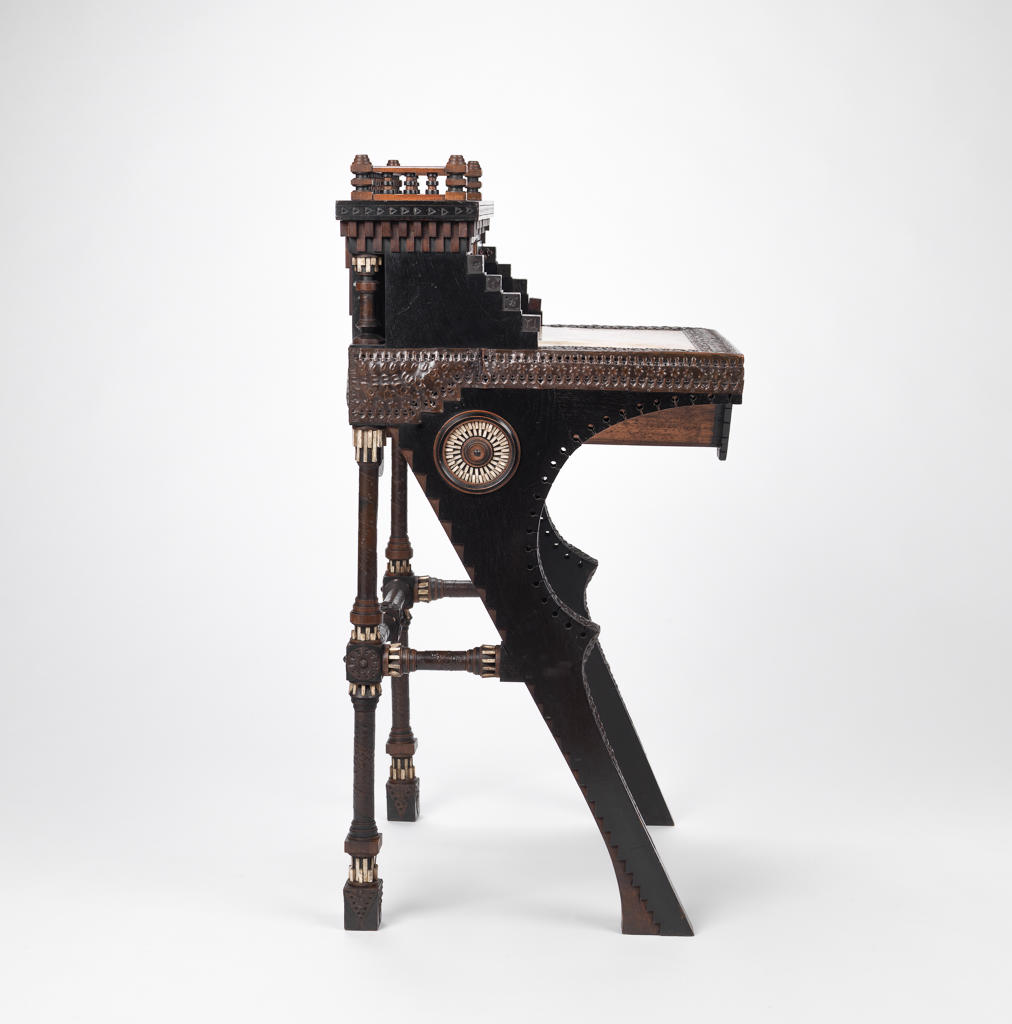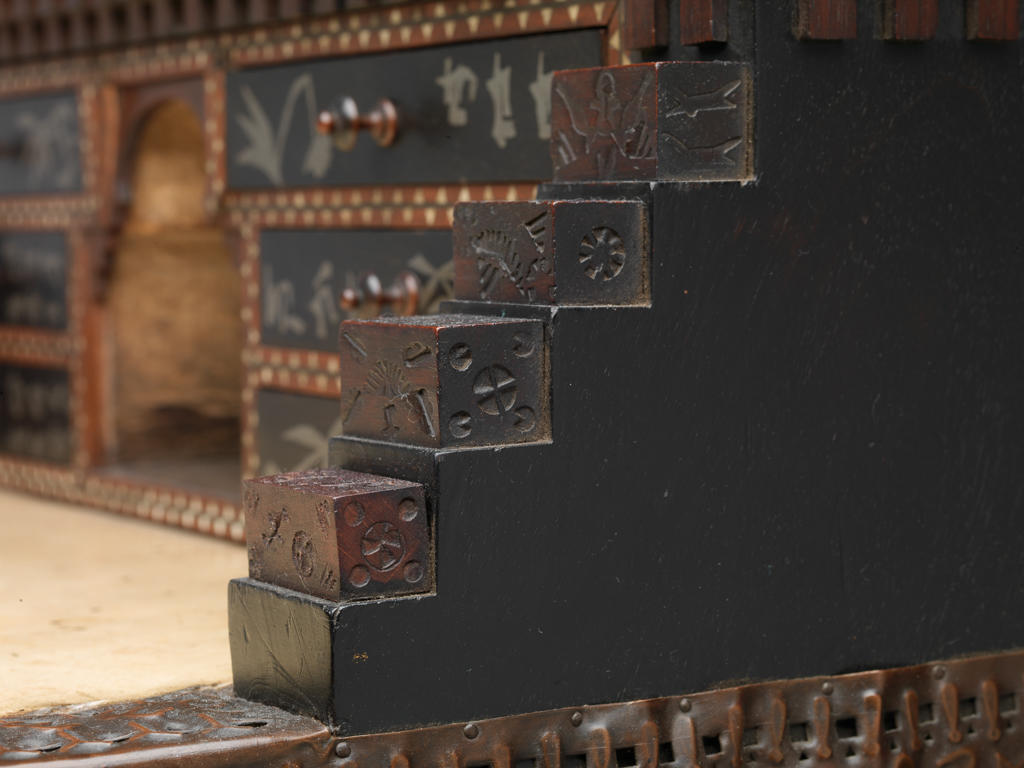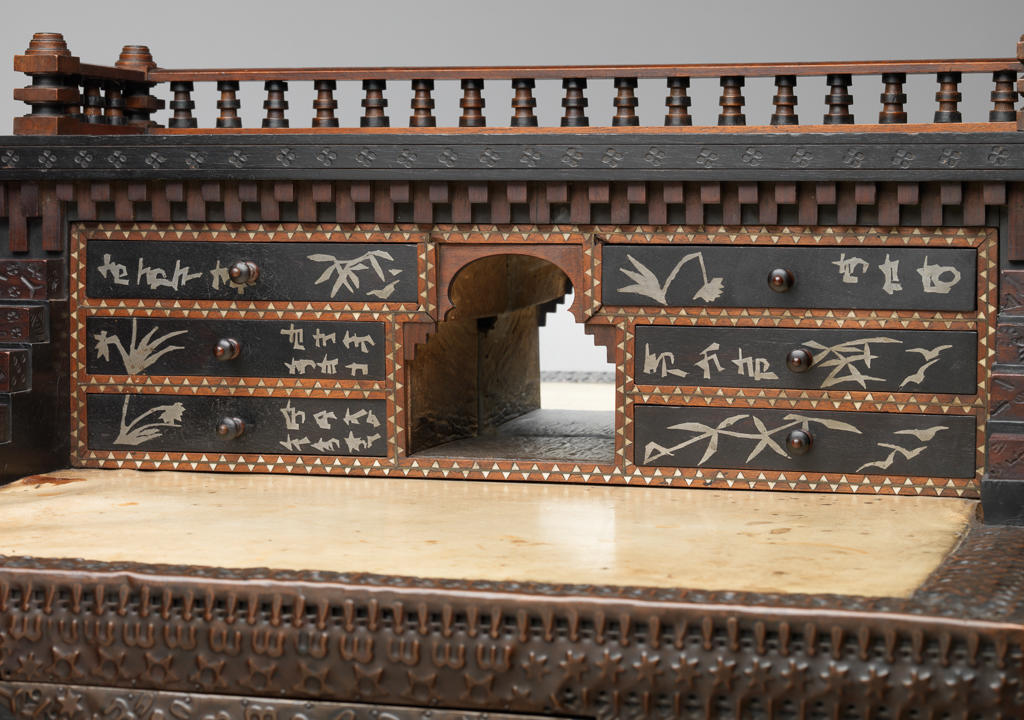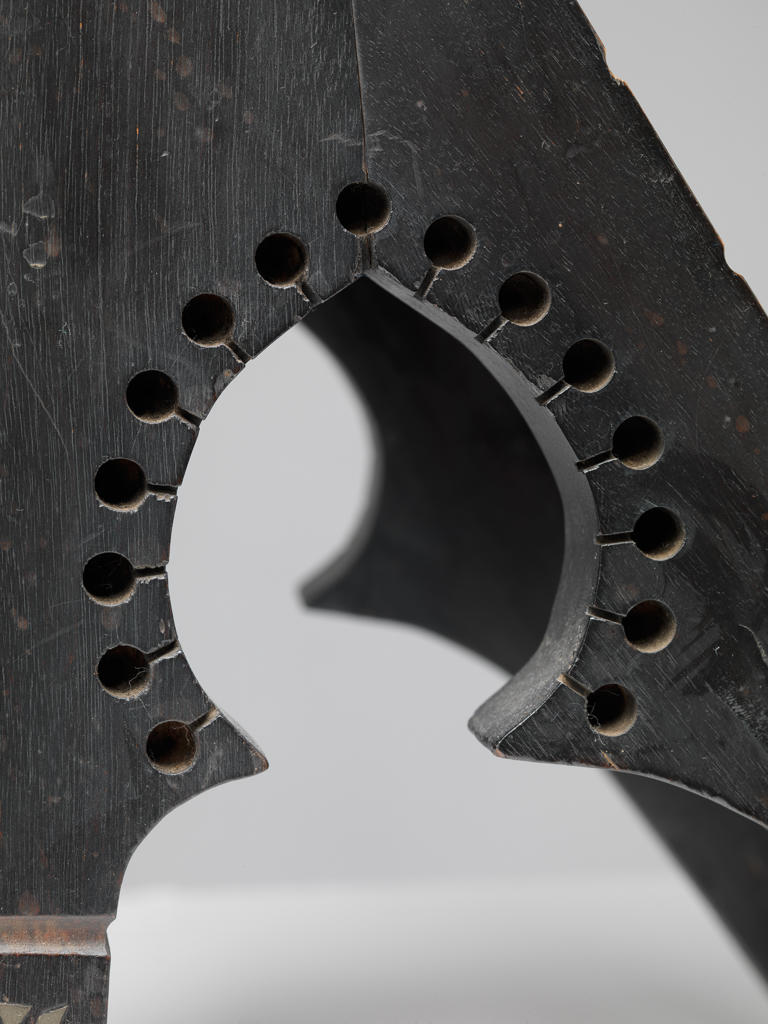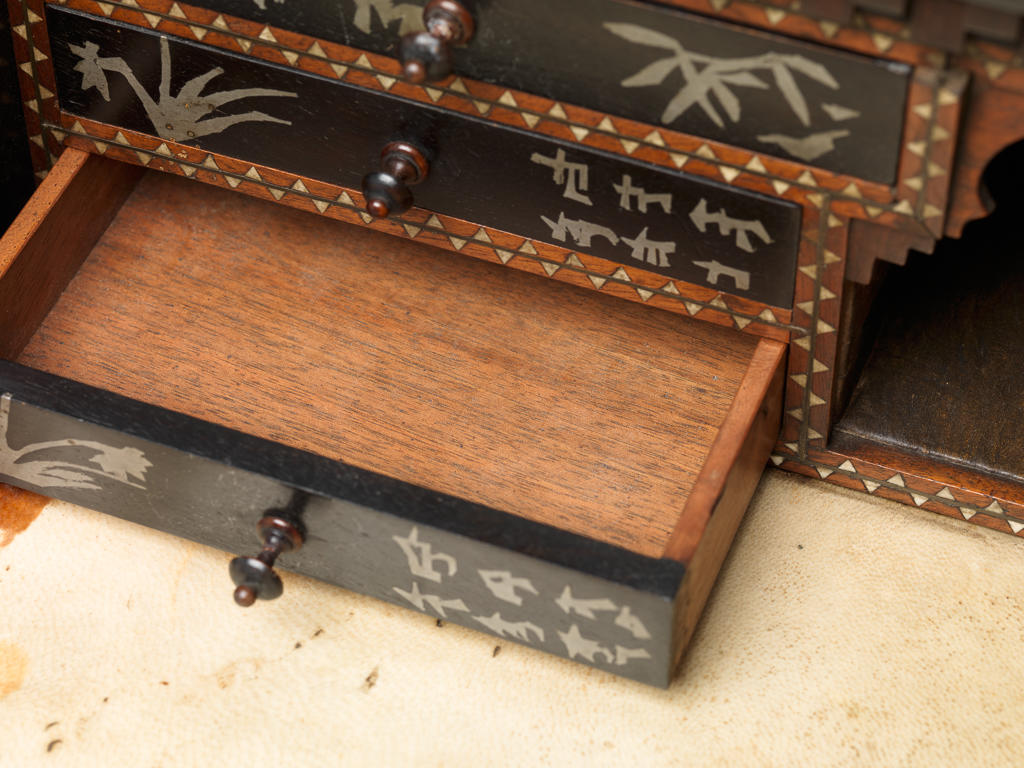An eclectic mix of North African, Moorish, Middle Eastern, and Japanese aesthetics, this desk and table are the original creations of Italian designer Carlo Bugatti. Trained as an architect at the Accademia di Brera in Milan and the Académie des Beaux-Arts in Paris and a prodigious producer of ceramics, textiles, and metalwork, Bugatti is best known for extraordinary furniture designs. He typically used such diverse materials as parchment, exotic woods, mixed metals, and knotted silk rope and tassels, meant to recall Persian rug fringe. The daring mix of cultures and diverse media consistently resulted in works that were inimitable in style, claimed by no single culture but fomented in the designer’s mind. Bugatti once responded to the Queen of Italy’s compliment of his Moorish style, “You are mistaken, the style is mine.”
After showing his exotic examples of beds, chairs, tables, and casegoods at the Industrial Arts Exhibition in Milan in 1888, Bugatti gained attention and was awarded impressive commissions. Success led to the establishment of his Milan studio in 1898, as well as displays at world’s fairs in Turin in 1898 and Paris in 1900. At the 1902 First International Exhibition of Modern Decorative Arts held in Turin, the designer’s Camera a Chiocciola (Snail Room) was awarded the highest honor. The room was fashioned in a spiral around a bar, and featured a model of the mollusk’s head.
Made about 1900, during the height of Bugatti’s career, this desk and chair are completely finished in the round. The center of the chair back and the back of the desk each feature a large, intricately embossed disk of copper that continues around the edges of the desk in a wide decorative border and faces the front of an unusually shaped triangular drawer.
The circular forms play against geometric patterns rendered in wood and ivory that punctuate numerous surfaces, including the vigorously canted legs of both pieces. Seemingly leaving no surface undecorated, the geometry continues with painstakingly carved stair-stepped elements that form the sides of the desk.
The horseshoe or keyhole arch above the mirrored niche in the desk’s center recalls the architecture of North Africa, where the designer traveled in the 1880s. Creating a unifying element, Bugatti also employed the arch style where the chair legs come together with dynamic angularity. The inlaid pewter characters on the drawer fronts falsely promise a rational explanation of the engaging cacophony of styles, patterns, decorations, and materials, but they are completely nonsensical, inventively imitating a made-up pastiche of Japanese and Islamic calligraphy and teasingly leaving the meaning to the viewer’s imagination.
Elizabeth A. Williams
David and Peggy Rockefeller Curator of Decorative Arts and Design
